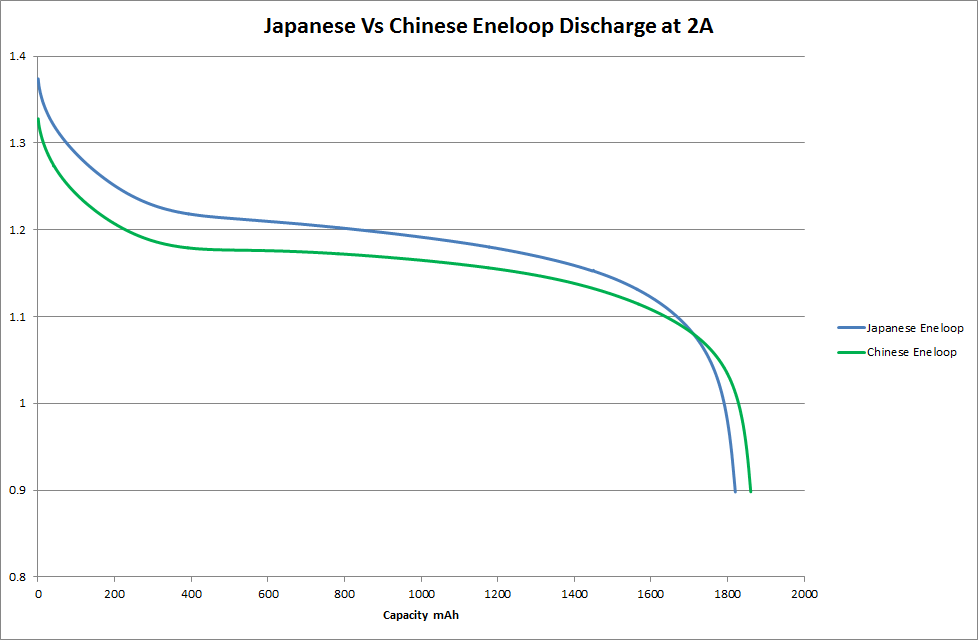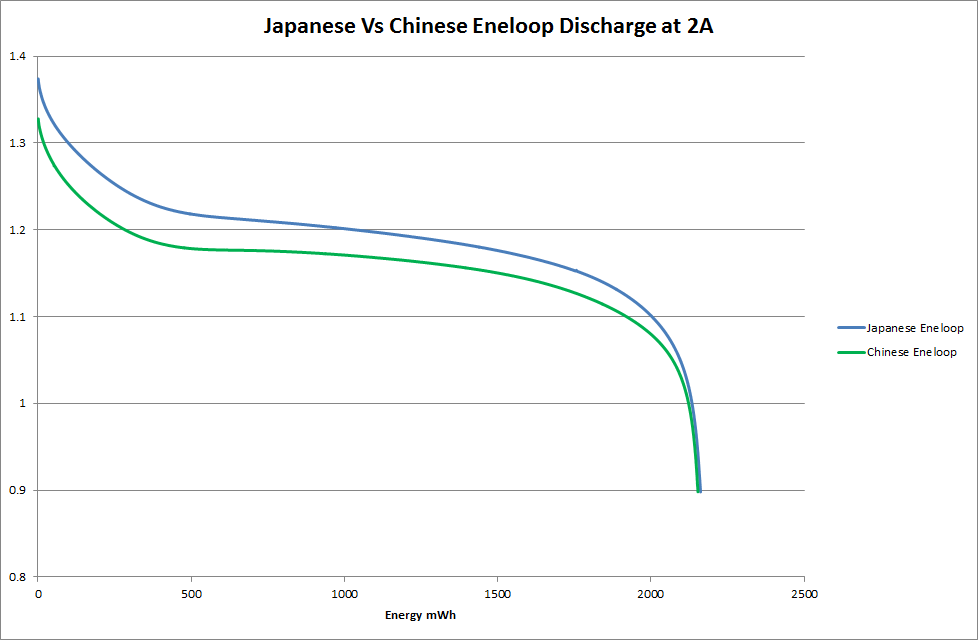I just checked one of the cells and it has a code: "1405" stamped on the side - I'd assume that means May 2014.
At first, I was going to say that I can't have an early batch of Chinese Eneloops, but it looks like I'm possibly wrong about when production first moved to China: The earliest reference to Chinese made Eneloops that I can find is from late April this year, so I could well have cells from a (relatively) early batch.
Panasonic has been making NiMH cells in China for a while now - I found some speculation that the Chinese Eneloops are just rebadged Panasonic Evoltas. Maybe that's the case and they've just "uprated" the cycles that they're claiming and they are just the same (inferior) cells...
Good question on the retention rating. They do claim on the packaging that it's based on IEC standard tests - I've haven't really looked at that part of the standard to see if it's accelerated or not...
Absolutely - some transparency in all of this would be good IMHO.
I found a document on the web site of the Australian distributor of Eneloops:
http://www.master-instruments.com.au/files/news/eneloop_re_branding_document_august_2014.pdf.pdf
The third page has a comparison of the old 3rd gen Japanese cells to the 4th gen Chinese cells. Amongst other things, it's claimed that the Chinese cells work better in high temperature environments and that they work better in high drain devices. I don't know about the high temperature environments, but I feel quite confident in saying that I think that the Chinese cells are actually worse in high drain devices since they have higher internal resistance according to my measurements...



